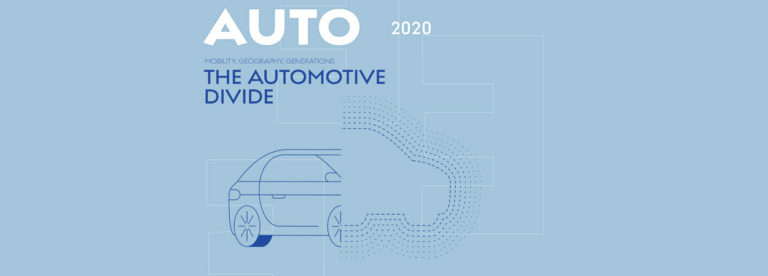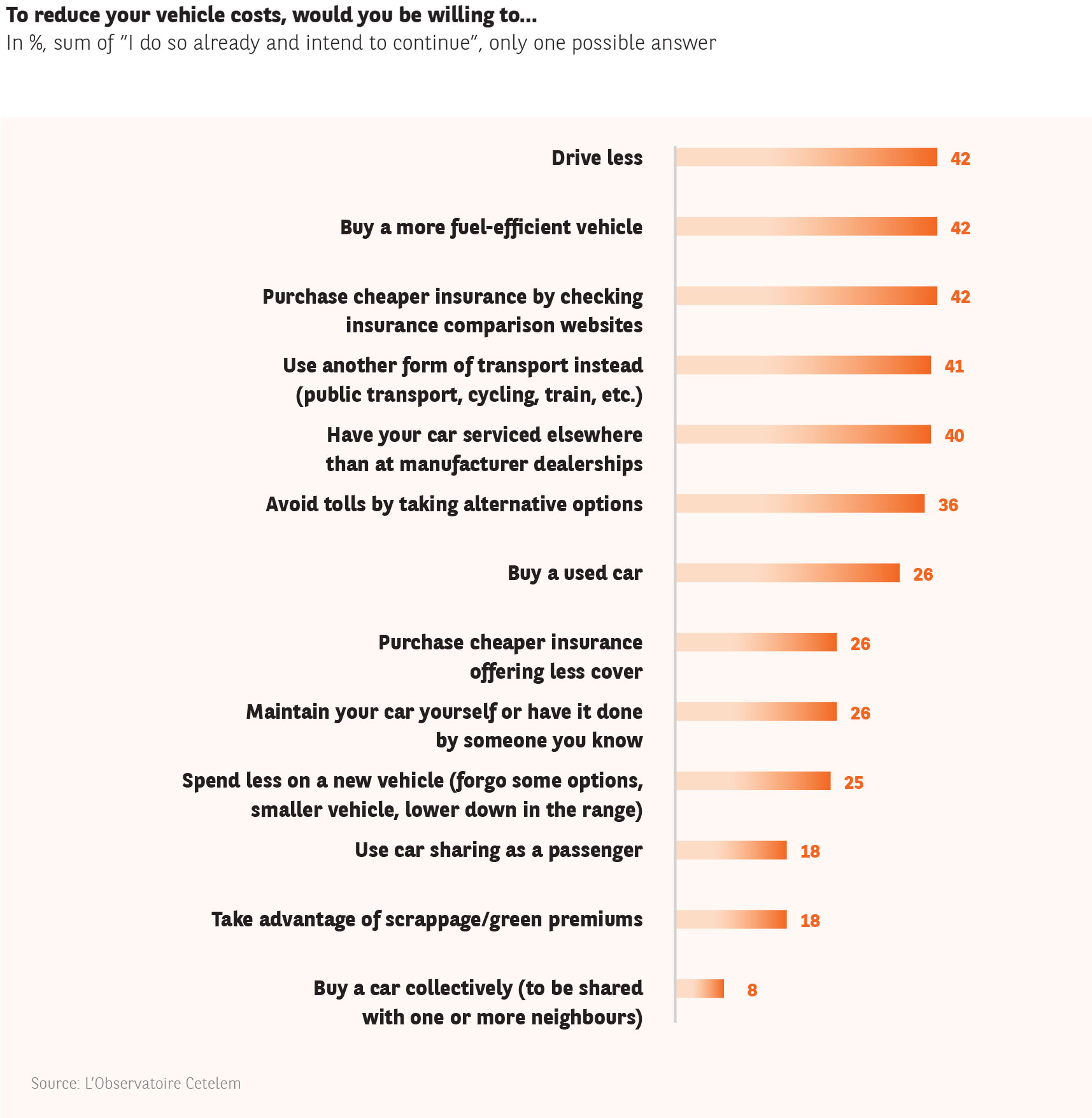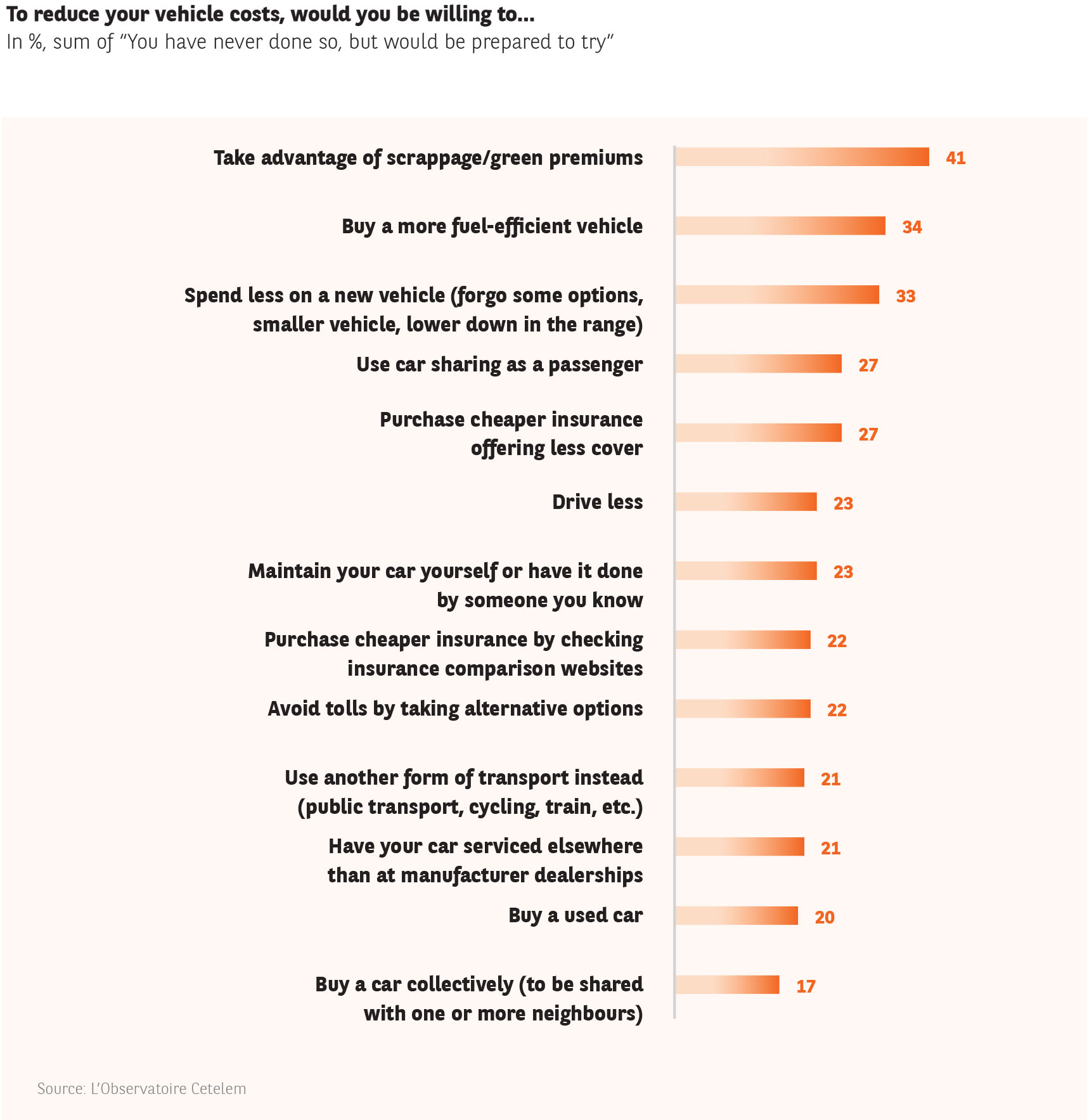Driving less to spend less


MEASURES HAVE ALREADY BEEN TAKEN TO CUT RUNNING COSTS
In order to face up to budgeting and financial issues, motorists have adopted various measures to reduce their motoring costs. 4 out of 10 drive less, with the Japanese being the most reluctant to reduce their mileage (26%).
The same proportion prefer to buy a used or more fuelefficient vehicle, reduce their insurance costs by using comparison websites, or avoid toll roads.
Switching to another form of transport is another option, one favoured in particular by the Chinese, the Turks and the Brazilians. Conversely, only an indomitable 18% of Americans prefer this solution. It is worth noting that only 9% of Chinese respondents opt for used cars, by far the lowest percentage of all the countries in the study, although it must be said that the country’s second-hand market is yet to be properly structured (Fig. 24).
FIG. 24 :
OTHER POSSIBLE SOLUTIONS: A COMBINATION OF OPTIONS
For those who have not yet taken budgetary measures, the range of solutions on offer is somewhat different.
First and foremost, they intend to take advantage of scrappage premiums, green-vehicle premiums, etc. (41%).
Their second-favourite option is to drive less (34%).
The next is to spend less on a new car (33%).
These three solutions generate fairly similar responses in all countries.
However, also of interest to motorists is a fourth way of reducing their vehicle costs. Indeed, 1 in 4 are now considering ride sharing, with 18% already using such services as passengers. This is a practice in which the Chinese lead the world. 32% already partake in car sharing as a passenger to reduce the amount they spend on their car, while also resolving the vexed issue of parking, which is a major problem in Chinese cities. Those in emerging countries also regularly engage in the practice. This is probably due in great part to the adoption of car sharing to commute to work more cheaply (Fig. 25).
FIG. 25 :


